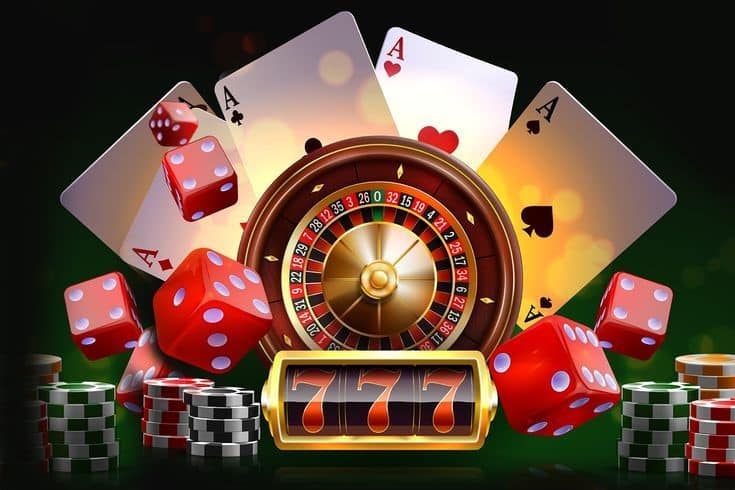
Within the vibrant and thrilling world of gaming establishments, where luck and strategy intertwine, hues and aesthetic play a pivotal role in attracting players. From the moment visitors step into a casino or log into a gaming website, they are immersed in a sightly feast that captures their attention and entices them to explore more. Bright colors, engaging graphics, and innovative layouts are meticulously crafted to create an atmosphere of excitement and anticipation, ultimately enhancing the gaming experience.
While players navigate through the dynamic landscape of casino games, they come across a range of designs that not only serve visual purposes but also affect emotions and choices. Colors like scarlet and yellow symbolize wealth and luck, while soothing blues and emeralds can create a much relaxed environment. Understanding how these elements function together enables casinos to create an inviting and energizing atmosphere that encourages players to engage with the games, spend more time at the tables, and boost their overall enjoyment.
The Study of Color in Casino Games
Hue plays a key role in the creation of casino games, shaping player emotions and responses. Bright and bold shades, such as red and yellow, are often used to incite thrill and attract focus. These shades create a sense of urgency and energy, encouraging participants to participate more eagerly with the game. By thoughtfully selecting tints, designers aim to elicit feelings of satisfaction and expectation, which can enhance the complete player experience.
Different shades also have psychological associations that can influence how participants perceive their possibilities of success. For example, lime is frequently associated with good fortune and prosperity, making it a popular choice in activities like the roulette wheel and poker games. This association can cause gamblers to feel more positive and assured in their play, ultimately encouraging them to stake more. Understanding these connections allows game developers to craft environments that enhance player satisfaction and retention.
Moreover, the interface of gaming interfaces often utilizes gradients and differing shades to instruct players’ responses. For case, successful results may be emphasized with vivid, contrasting colors, creating a visual cue. This method reinforces positive outcomes and supports repeated engagement. By utilizing the psychology of color, casinos can create games that not only attract gamblers but also keep them involved and invested in their game experience.
Creative Elements that Engage Players
The aesthetic appeal of casino games is primarily influenced by the implementation of vibrant colors. FB88 Lively and contrasting colors are deliberately chosen to create an inviting atmosphere that grabs interest. For instance, crimson and golds often signify good fortune and wealth, which is why they are prevalent in the color schemes of gaming machines and table surfaces. These colors not only attract players in, but they also stir emotions related to thrill and anticipation, enhancing the overall gaming experience.
In addition to color, the design and layout of gambling games play a crucial role in captivating players. Games are designed to be intuitive, ensuring that players can easily understand the rules and mechanics. User-friendly interfaces, along with engaging graphics and animations, help maintain player interest and encourage extended play sessions. The physical elements, such as the feel of the buttons and the audio of the games, also add to a holistic sensory experience that keeps players immersed.
Finally, conceptual elements in game design can significantly influence player choice. Many casino games are inspired by media, myths, or exploration motifs, incorporating symbols and characters that connect with players. These themes create a sense of engagement and relatability, making each game feel unique. When players feel a bond to the theme, they are more likely to choose that game over others, leading to increased participation and enthusiasm within the gambling environment.
Case Studies: Notable Casino Game Designs
One noteworthy example of impressive gambling game design is the popular slot machine series themed around popular movies. Games such as those based on the Wizard of Oz and Game of Thrones utilize bright colors and top-notch graphics to engage players in familiar narratives. The application of moving visuals and captivating sound effects captures the attention of players, building an emotional connection to the theme. This approach merely fosters longer play but also enhances the overall gaming experience, yielding increased player retention.
Another notable case is the application of color in table games like 21 and the wheel. Casinos often design these games with dark reds and greens, colors traditionally linked with luck and wealth. For instance, the green felt on a 21 table provides a soothing effect, while the crimson accents in roulette invite excitement. This intentional use of color helps to establish an inviting atmosphere that motivates players to participate, satisfying their psychological impulses and boosting their enjoyment. https://g0.in.net/
Finally, social casino games that include social features and bright, colorful designs have experienced remarkable success in engaging players. Games like Zynga Poker and Slot-O-Mania leverage bright colors and playful animations to create an inviting online environment. The addition of leaderboards, social sharing options, and in-game rewards promotes competition and community, attracting players in for longer sessions. Such designs merely make the games visually attractive but also emphasize social interaction, a key factor in player retention and engagement within digital casino environments.